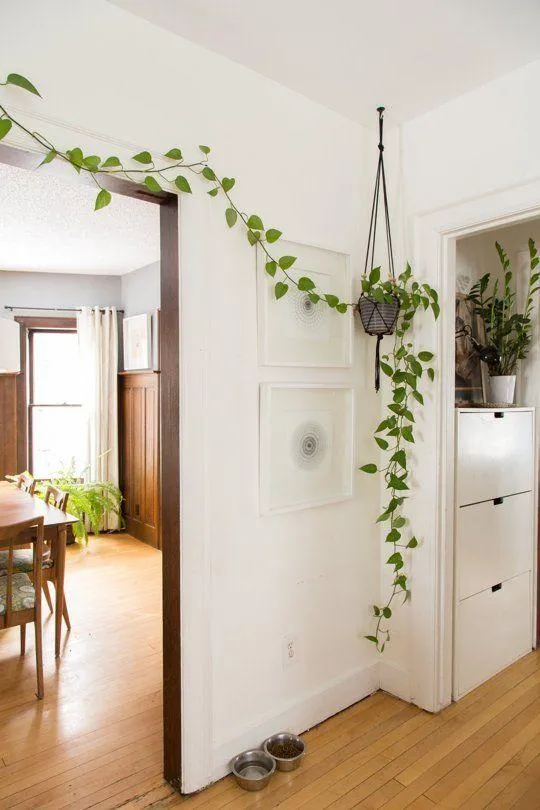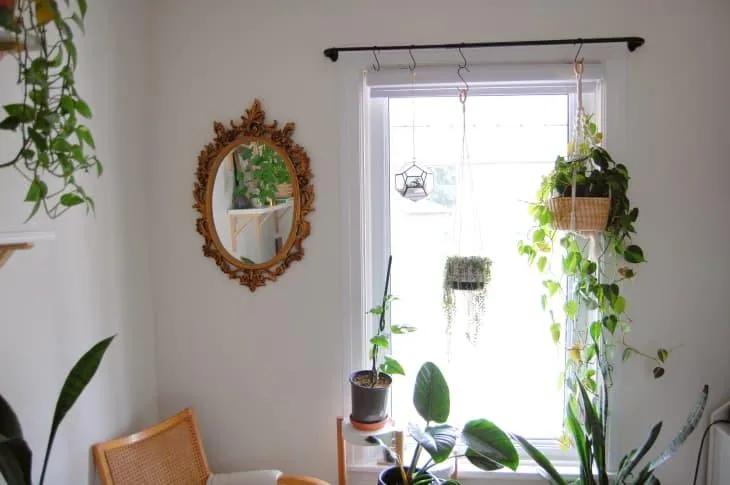The Complete Guide to Hanging Plants in Your Apartment
Whether you’ve got a tiny studio or a spacious loft, hanging plants are a great way to add greenery without taking up precious floor space. As an apartment dweller myself, I’ve tried just about every plant hanging method under the sun. In this article, I’ll share my best tips and tricks for decorating your place with hanging planters.
Choosing the Right Plants
- Trailing vines: English ivy, pothos, and spider plants are good options that can be trained to cascade down the sides of hanging baskets.
- Small foliage plants: Succulents, peperomias, and spiderworts display their leaves nicely when suspended in the air.
- Herbs: Basil, thyme, and mint thrive when their roots are kept evenly moist. Hang them above your kitchen sink or shower.
Try to select plants suited to your space’s light conditions. For north-facing windows, go with low-light tolerant varieties. Southwest exposures give you more options. Always check plant tags for care instructions too. You don’t want to get home with something too high-maintenance!
Hanging Hardware
The backbone of any great plant hanging setup is the hardware. You’ll need some type of hanging mechanism that can safely support the weight of wet soil and foliage for years to come. Here are the main options:
- Ceiling hooks: Ideal for light planters. Just push the hook into ceiling drywall and you’re set.
- Drop-down rods: Extend from ceiling fixtures to adjust plant heights. More heavy-duty than simple hooks.
- Macrame hangers: DIY or buy pre-made hangers made of sturdy jute twine. Easy to knot yourself.
- Chain link: Draped overhead then staked into the ceiling. Allows plants to hang at varying lengths.
No matter what you choose, be sure it can bear at least 5 times the total anticipated load. Safety first—you don’t want a crashing plant avalanche!
Maximizing Your Wall Space
Even the smallest apartment has potential for vertical greenery with the right mounting techniques. Here are some pro tips:
Hang plants on shelves: Use brackets or wall hooks to suspend planters along open shelves for a built-in look.

Utilize windowsills: Drill holes through wide windowsills and thread rope or chain to hang bundles of pots in front of the glass.
Decorate doors: Install hooks on the back of closet and pantry doors for a pop of plant life when you open them.
Adorn the bathroom: Suction cup plant holders or hanging baskets above the toilet add natural ambiance without consuming counter space.
Getting creative with wall mounting frees up precious floor real estate. You’d be amazed how many pots a single wall can support!
Assembling Hanging Planters
Putting together hanging pot systems is honestly one of my favorite parts of the plant parenting process. Here are a few assemblies to try:
Macrame hangers: Knot jute or hemp cord into geometric patterns and insert pots upside down before hanging.

Pot clusters: Bundle 3-5 pots of varying sizes together with jute or landscape fabric and hang as one.
Hanging shelves: Secure small floating shelves to chains or hooks, load with potted plants, and suspend overhead.
Basket planters: Place nursery pots inside woven wicker or rattan pieces for an effortlessly boho vibe.
Get creative stacking, dangling, and arranging your planters. Play with different shapes and colors for visual interest wherever you hang them.
Comfort and enjoyment are also important when designing your space. Make sure hanging heights allow you to easily tend plants without step ladders. Balance fuller pots evenly to avoid lopsidedness. Take into consideration how folks will move around furniture below where things are hung too. With some trial and error, you’ll achieve a beautifully arranged system.
ongoing Care for Hanging Plants
Once your ceiling garden isInstalled, keeping everything healthy requires consistent TLC. Here are some care tips:

Water thoroughly when dry: Check soil moisture by sticking your finger in pots. Water hangs the same as plants on the ground.
Rotate occasionally: Turn hanging planters every few weeks so all sides receive equal light exposure. This prevents leaning.
Prune as needed: Cut off dead or leggy stems to keep plants bushy. Trim trailing vines so they retain their cascading form.
Repot infrequently: Hanging planters dry out faster, so root-bound plants may only need re-potting every 2-3 years versus annually.
Fertilize in spring and summer: Apply diluted liquid or water-soluble plant food according to label instructions.
Inspect for pests: Check leaves for signs of insects and treat immediately if needed. Prevention is key with wall/ceiling gardens.

With a little effort, you can have a thriving indoor jungle above your head for years to come. Let me know if you have any other plant hanging questions!
And there you have it—everything you need to know to design awesome hanging plant displays, whether you live in a 500-square-foot studio or spacious loft. Hopefully these tips help maximize your apartment’s greenery potential. Hanging plants have totally transformed my tiny home, and I find their care meditative. It’s like having little pockets of nature everywhere I look. Please let me know if any part of the guide was unclear. I’m always around for more plant chats!
Hanging Plants Successfully in an Apartment
| Plant | Light Needs | Watering Frequency | Best Hanging Method |
|---|---|---|---|
| Pothos | Low | Every 1-2 weeks | Macrame hanger or woven rattan basket |
| Spider plant | Medium | Weekly | Chain or rope |
| English ivy | Low-Medium | Every 2 weeks | Self-watering pots or hanging planters |
| Philodendron | Low-Medium | Every 1-2 weeks | Hooks or hanging pots |
| Peperomia | Medium | Weekly | Suction cups or hooks |
FAQ
- What are some good places in my apartment to hang plants?
Window sills are basically the best spots since plants need sunlight. You can also put them on shelves or hang them from the ceiling if you have adequate height. Just be sort of careful hanging anything too heavy from the ceiling. - What kinds of plants are good for hanging?
Pothos, philodendron, spider plants, and english ivy are all amazing hanging plants that can kind of handle low light. They’ll basically grow anywhere! Succulents and air plants are also awesome choices since they don’t need much water or care. - What kind of hangers should I use?
Macramé hangers look awesome but can be a bit pricey. Despite that, cloth or jute hangers from the craft store work well and are pretty budget friendly. You can even make your own simple hangers from supplies around the apartment like rope or twist ties. Just be careful not to use anything too heavy that could potentially fall. - How do I hang the plants securely?
Drill holes high in your walls and securely attach eye hooks, ensuring they’re screwed in totally straight and level. Test them with your weight before hanging anything valuable! For ceiling hangers, use strong adhesive hooks rated for the weight. Measure twice, hang once to avoid any potential disasters. It’s better to be safe than sorry with anything hanging over your head! - What’s the best way to water a hanging plant?
Using a watering can with a long spout makes it easy to water from below without removing the plant. Or invest in a self-watering pot system to avoid disastrous over-watering. Another option is placing the pot in the tub or sink when watering. But is hauling plants in and out worth the effort? Perhaps a watering can is a simpler solution. - How do I pick the right pot size?
Go with a pot one size larger than the root ball to allow for growth. Overcrowded roots can stunt your plant. At the same time, don’t go too big or it’ll be a pain to water. Aim for a pot just 1-2 inches bigger than the current root mass. This should provide adequate room without being too huge to haul around. - What if my plants get too heavy as they grow? How can I support the weight?
If plants fill out and get hefty over time, you may need to reinforce the hangers. Thicker rope, wire, or bonding several thin twist ties together can take on more weight. For ceiling hangers, consider installing two close together for extra stability. Again, measure structure ratings against plant weights to stay within safe limits. It’s better to address weight issues proactively rather than being leftscramblingafter adisaster! - Any tips for displaying hanging plants attractively?
Group similar plants together for a cohesive look. Vary textures by combining succulents with foliage. Consider macramé hangers or draping vines over shelves, rails, or across a wall for visual interest. Decorate empty hanging pots with stones, floral foam, or air plants. With some imagination, you can stylishly showcase your whole collection.
